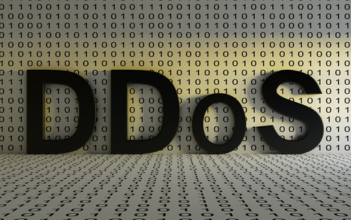Technology changes along with the methods and equipment used by cybercriminals. The year 2022 saw some of the most vicious and dangerous malware attacks on businesses and individuals worldwide. This post will examine the top malicious software to be on the lookout for in 2023 and offer professional guidance on how to secure your systems against these threats.
TrickBot: The Master of Deception
TrickBot is a Trojan malware that targets financial institutions and other high-profile targets. It spreads through email phishing campaigns and downloads additional malware onto the victim’s system. TrickBot is known for its advanced techniques and ability to evade detection. In 2022, TrickBot was responsible for a large number of attacks on banks and financial institutions, causing significant financial losses.
Make sure your anti-malware software is current, avoid clicking on dubious links and never download anything from an untrusted source if you want to shield your computer from TrickBot. Switch your passwords frequently across all of your accounts and use two-factor authentication.
Ryuk: The Most Devastating Ransomware
Ryuk is one of the most devastating ransomware strains in existence. In 2022, Ryuk was responsible for numerous high-profile attacks, including the one that targeted the Colonial Pipeline, causing significant disruptions to the fuel supply chain.
Make sure your backup procedures are reliable, that your anti-malware software is current, and that you periodically change your passwords to safeguard your system from Ryuk. Employee education on phishing emails and how to spot them is also crucial.
SolarWinds: The Expert Supply Chain Attack

One of the most massive cyberattacks in history, SolarWinds targeted numerous governmental organizations and large businesses. This malware attack was executed by exploiting vulnerabilities in SolarWinds software, which is used by many organizations worldwide. SolarWinds is an example of a supply chain attack, where attackers infiltrate a third-party vendor to gain access to their client’s systems.
To protect your system from supply chain attacks like SolarWinds, ensure that you thoroughly vet third-party vendors before giving them access to your systems. Regularly monitor network traffic and look out for unusual activity that may indicate a security breach.
Pegasus: The High-Tech Espionage Tool
Pegasus is a sophisticated spyware tool developed by the Israeli company NSO Group. It may gather a variety of data, including passwords, messages, and call records, and it specifically targets mobile devices. Pegasus can remotely activate the camera and microphone on the target device, enabling attackers to view the victim’s activity in real-time.
To protect your mobile devices from Pegasus, ensure that you regularly update your operating system and all apps to the latest versions. Be cautious when downloading apps from third-party app stores and avoid clicking on suspicious links.
DarkSide: The Newest Ransomware Threat
The first instance of the ransomware strain known as DarkSide was in 2021. In 2022, DarkSide was responsible for several high-profile attacks, including the one that targeted the Colonial Pipeline.
To protect your system from DarkSide, follow the same guidelines as for Ryuk ransomware. Additionally, be vigilant when it comes to third-party vendors and avoid providing them with unnecessary access to your systems.

Conclusion: Malware
The threat of malware attacks is a significant concern for businesses and individuals worldwide.








1 comment
Loving the info on this website , you have done great job on the articles.